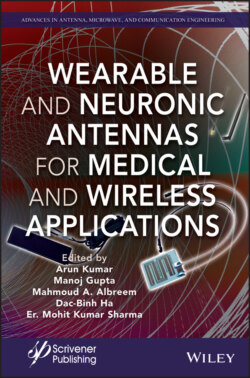Читать книгу Wearable and Neuronic Antennas for Medical and Wireless Applications - Группа авторов - Страница 13
1.1 Introduction
ОглавлениеImproved bandwidth, efficient power utilization, and better handling of selective fading are prominent advantages of the MC [1]. The CP-OFDM is a simpler MC solution. However, it has poor spectral efficiency due to limited filtering options available.
Another candidate considered for multiple radio access in 5G is the Filter Bank Multi-Carrier (FBMC) [2]. The FBMC is a modified version of OFDM, where the rectangular transmit and receive waveforms are replaced by any other more frequency localized pulse shapes, which offer a more confined spectrum, relevant for spectrum-sharing scenarios.
In the FBMC with Offset Quadrature Amplitude Modulation (OQAM) system, Channel equalization is challenging compared to the standard CP-OFDM. This is because the real and the imaginary symbols in the FBMC-OQAM system are transmitted with a time offset, which results in loss of orthogonality in the imaginary part [2]. Thus, the received signal suffers from the additional imaginary part, which is termed as Imaginary interference. This interference degrades the performance of the channel estimator. As a result, channel equalization also degrades as it requires the knowledge of channel estimates. In conventional equalization methods for the FBMC-OQAM, the channel estimates are used to cancel the phase of the received signal and extract its real part. However, due to errors in channel estimates, the phase cancellation is not completely achieved. Thus, this conventional approach does not work in this scenario. Alternatively, people have proposed direct equalization methods, which still need improvements. Therefore, there is a need to design an efficient equalization method to combat the imaginary interference and inter-symbol interference (ISI), and inter-carrier interference (ICI) in the FBMC-OQAM system.
